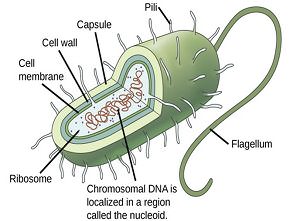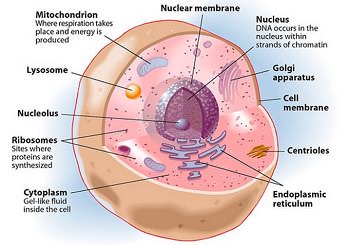The organisms can be classified into two types depending on the fact that whether their nucleus is enclosed by a nuclear membrane or not. These two types are
Prokaryotes
The organism in which nucleus is not bound by nuclear membrane are called prokaryotes e.g. bacteria are prokaryotic organisms. Prokaryotes are unicellular. In prokaryotes only one circular chromosome is present, which is made up of DNA and some proteins. In prokaryotes nucleolus and other membrane bound organelles such as mitochondria, chloroplast and golgi bodies are absent.

Eukaryotes
The organism in which nucleus is bound by nuclear membrane are called eukaryotes e.g. algae, fungi, protozoa, plants and animals. Eukaryotes may be both unicellular and multicellular. In eukaryotes more than one chromosome are present. In eukaryotes nucleolus and other membrane bound organelles such as mitochondria, chloroplasts and golgi bodies are also present.

Test Your Understanding and Answer These Questions:
- Define prokaryotes and eukaryotes.
- Give differences between prokaryotes and eukaryotes.
- Give one example each of prokaryotes and eukaryotes.
